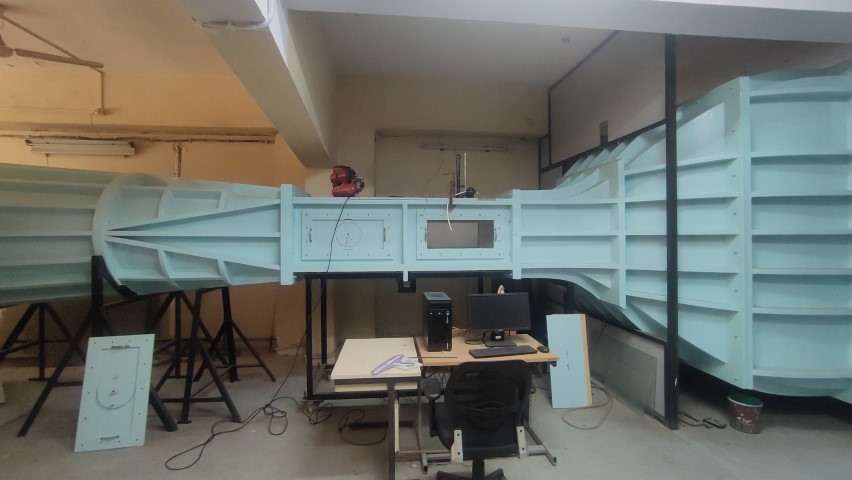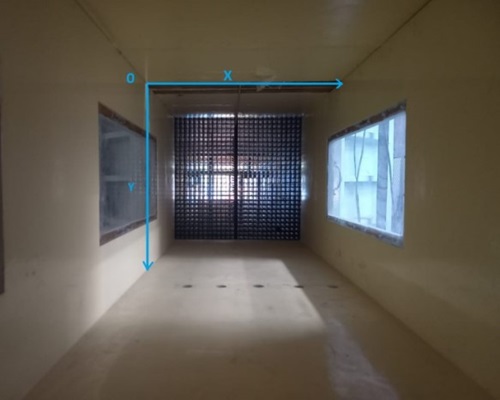Wind Tunnel Characterization
My first project at IIT Bombay involved obtaining the wind tunnel characterization, focusing specifically on the velocity contour. The primary objective was to record the magnitude of velocity within the test section of an open-type, low-speed wind tunnel. This data collection was crucial for plotting velocity contours at two different rotational speeds: 500 RPM and 1000 RPM.

Three-dimensional velocity contours are instrumental in visualizing the flow pattern and identifying any anomalies in the profile. To achieve this, we measured the velocity along the centerline throughout the test section, taking note of the uncertainty at each point. The test section, where these measurements were taken, is strategically located at the end of the contraction section and just upstream of the diffuser. The test plane was a cross-section measuring 2 feet by 2 feet.

For the purpose of measurement, both the X and Y directions were divided into a grid of 12 points each. We employed a manual 2D traverse system to maneuver the probe along these X and Y axes. The Pitot-Static probe, crucial for our measurements, was positioned in the test section of the Wind Tunnel, specifically at a distance of 12.8 cm from the start of the test section.This probe was then connected to a digital manometer. This setup was crucial for accurately reading various parameters, including the magnitudes of velocity, dynamic pressure, and temperature, essential for the comprehensive analysis and plotting of velocity contours.
